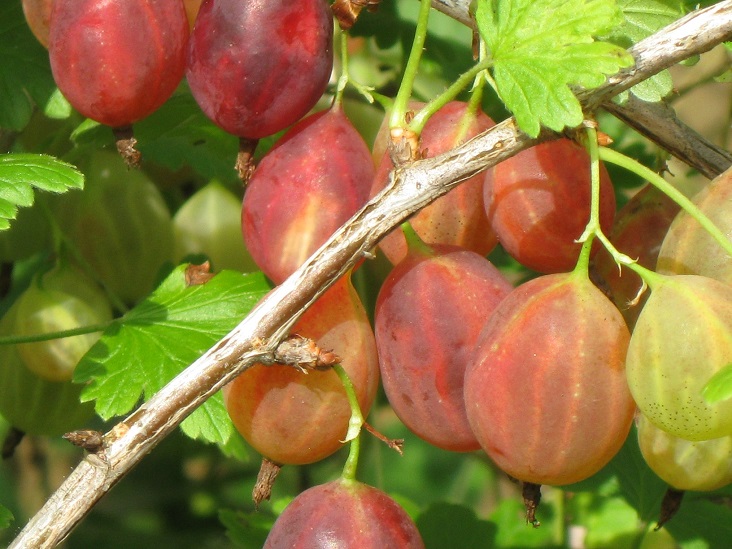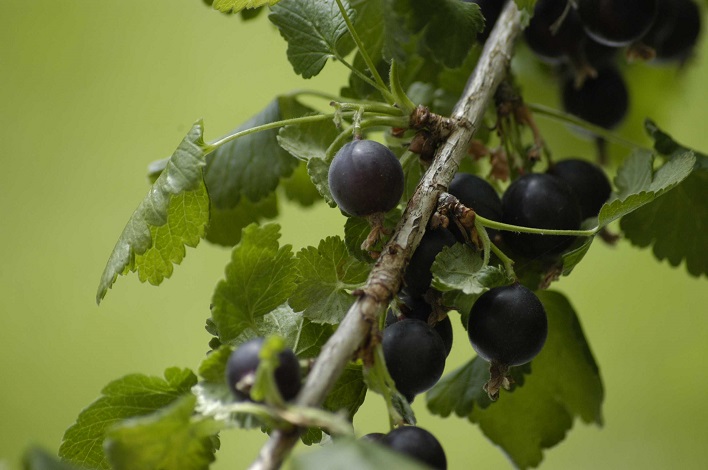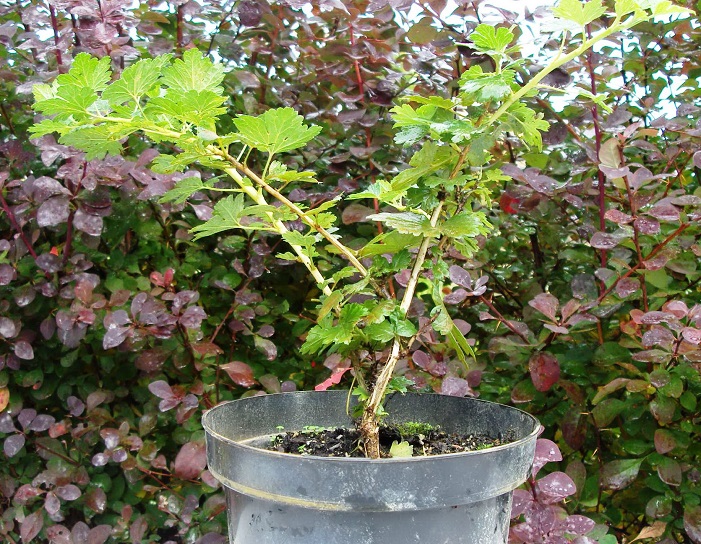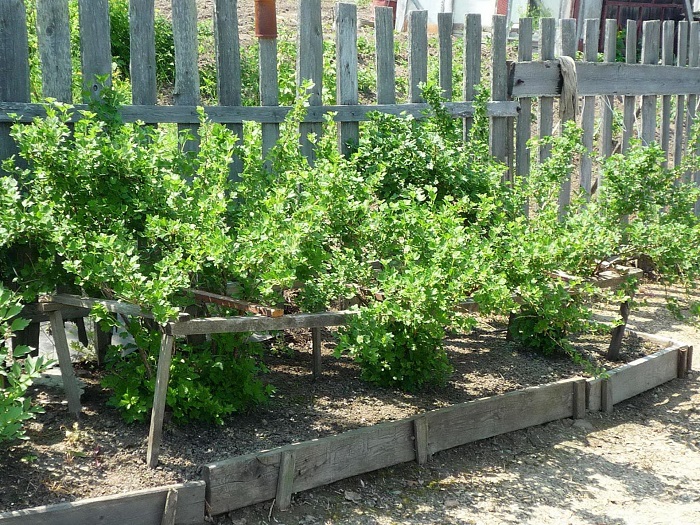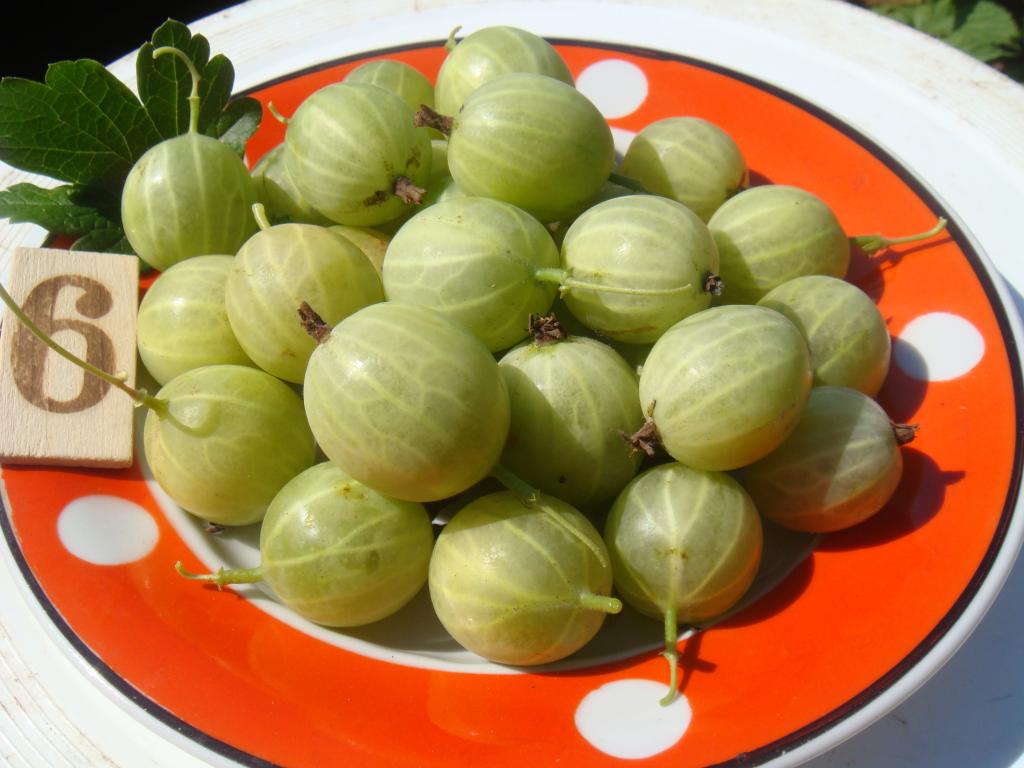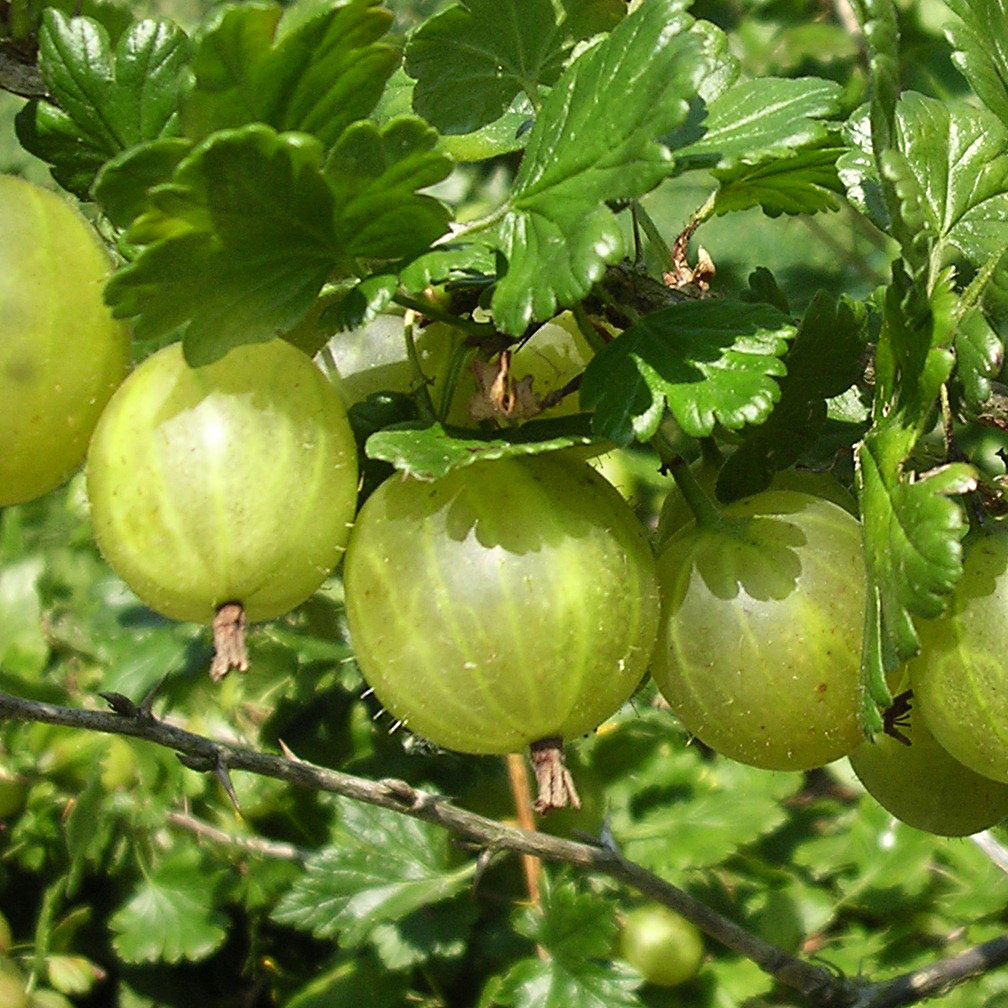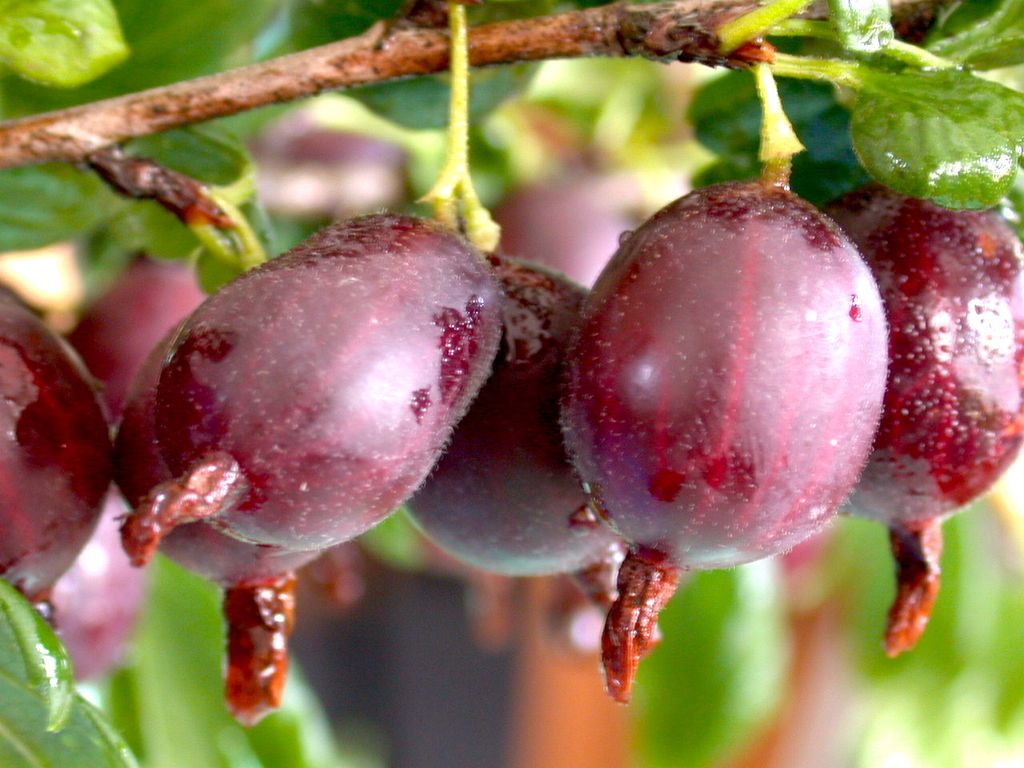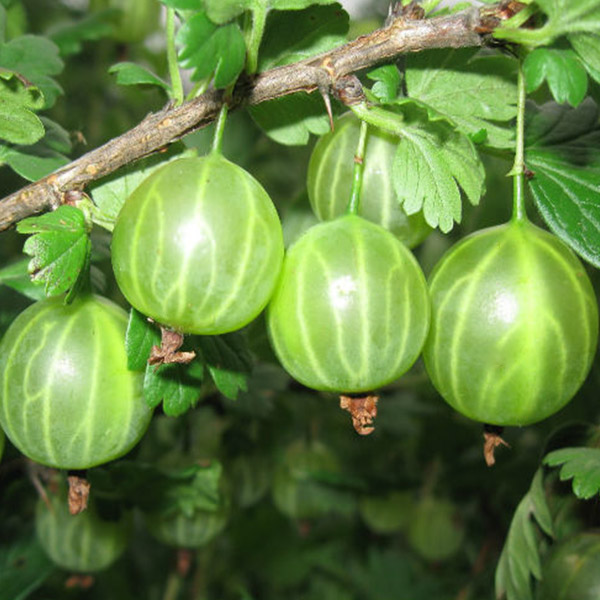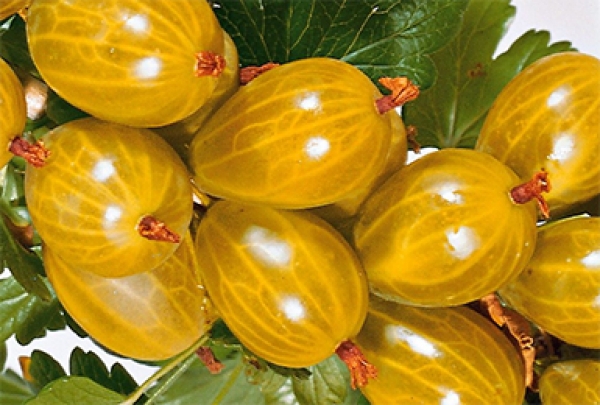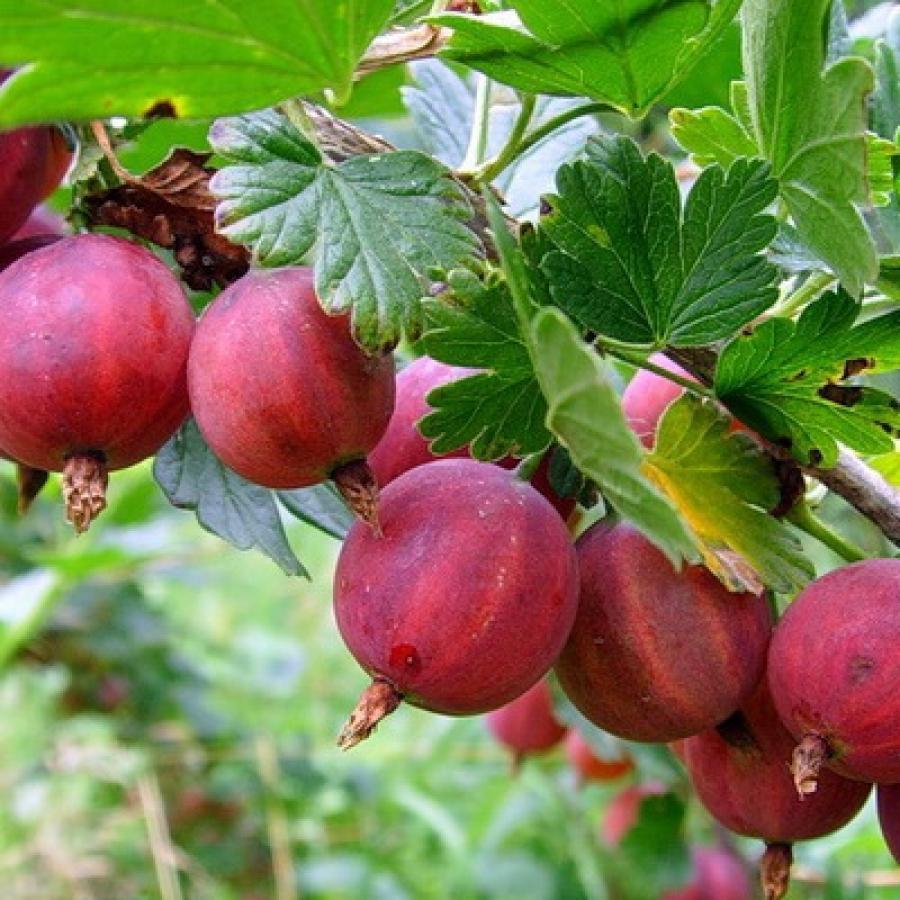Content:
In summer, tasty and healthy gooseberries are a real storehouse of vitamins. Only their lovers are often forced to endure pain and heal the resulting scratches that leave the thorns of the bush after collection. Fortunately, breeding based on North American varieties has produced plants that are almost completely devoid of thorns. This greatly facilitates the process of care and harvesting.
general characteristics
Thornless gooseberry varieties, contrary to popular belief, are not completely devoid of thorns. If sellers assure you otherwise, then this is a simple deception. Thorns are present on these shrubs, but in much smaller quantities than on previously known and familiar ones. Moreover, any variety can lose or acquire thorns over time. This fact depends most of all on the care and individual characteristics of the plant. For example, a gooseberry without thorny thorns of the "Northern Captain" variety at the very beginning of fruiting has a huge number of thorns, which completely fall off by the time the fruit ripens.
A lot of controversy among gardeners is caused by the taste of the thornless gooseberry. Some are inclined to assure that its berries are much tastier, while others, on the contrary, remain supporters of the classic prickly varieties. Experts assure that the taste of the fruit does not in any way depend on the presence of thorns on the bushes. It is directly related to the characteristics of a particular variety.
Gooseberry gardeners face such a dangerous disease as powdery mildew. It often infects spiked European plant varieties and kills the affected bushes. The thornless large-fruited gooseberry is not very susceptible to this disease. For prophylaxis in spring, it is enough to pour hot water (about 80 ° C) on it, and the problem will be solved by itself. In addition, this variety shows increased resistance to other types of diseases and pests.
Popular varieties
Breeders have long been working on breeding thornless gooseberry bushes. The result of their efforts was a lot of bred varieties, the most popular among which were won:
- Honey;
- African;
- Krasnoslavyansky;
- Ural studless;
- Commander.
The Honey variety is distinguished by increased frost resistance and excellent taste, but it is demanding in care. The berries at the stage of technical ripeness have a rich yellow color, a pleasant aroma and a sweet taste. Can be used both for fresh consumption and for all types of blanks.
The thornless dark-fruited gooseberry of the African variety is also quite capricious in cultivation, but gardeners still settle it on their plots because of the mass of advantages. Ripe berries have an unusual purple color and taste more like currants. It is widely used in jelly making.
Krasnoslavyansky refers to dessert varieties, has an interesting sweet and sour taste. Resistant to diseases, not too demanding in care. At maturity, the fruits have a rich red color, large and aromatic. Can be used for all kinds of workpieces.
The Ural thornless gooseberry is valued for its increased resistance to diseases and fruiting even in adverse climatic conditions. Berries with a classic taste, even at maturity, retain their green color.Fruiting begins 2 years after planting the bush. Frost resistance is excellent. The fruits are used both for fresh consumption and for all types of winter preparations. Jelly and jam from this gooseberry have an unusually beautiful green color and sweet and sour taste, which does not leave indifferent even the most demanding gourmet. Gardeners who want to start a Ural besshipny gooseberry on their plot, study the description of this variety more thoroughly, paying attention to the subtleties and nuances of growing.
Thornless gooseberries of the Komandor variety at the stage of technical ripeness have an unusual brown-red color. The berries are aromatic, with subtle notes of sourness. Differs in a high content of vitamins and a long fruiting period. The disadvantage is the poor transportability of the harvested crop.
Features of agricultural technology
Varietal non-prickly gooseberries are planted in plots from mid-September to mid-October. An important condition is the choice of high-quality planting material. It is best to go to the nursery for it, because there is always a risk of buying the wrong variety on the market, or you will be sold seedlings with a damaged root system, the presence of diseases, etc.
Before planting a bush, you need to dig a hole in advance of 40x40 cm, add a bucket of well-rotted cow dung, complex mineral fertilizers and a little wood ash. All components are thoroughly mixed with each other, after which the seedling is lowered into the resulting mixture and buried. They try not to deepen the root collar.
Attention! So that moisture from the soil does not evaporate too quickly and weeds do not appear, it is recommended to mulch the soil under the bushes. For this, peat, pine bark, etc. are used.
If the planting of gooseberries without thorns was carried out according to all the rules, then in the first year the plants are not fed. In the second year, with the onset of heat, the bushes are fed with a manure solution in a ratio of 1: 8. In the third year, the thornless gooseberry already requires the introduction of 6 kg of manure, 0.5 glass of ash and 20 grams of superphosphate into the soil for each square meter of the plot. In subsequent years, similar varieties are fed once every 2-3 years in a similar way. After the snow melts, nitrogen fertilizers can be applied.
Care features
Caring for studless gooseberry varieties is easier than regular ones. This is due, first of all, to the absence of thorns, making it easier to cut the bushes and carry out processing. In addition, these varieties yield higher yields. As a rule, the gooseberry varietal, thornless, is large and has good taste. In order to get a good harvest and provide your family with healthy berries in the summer season, you need to follow a few simple rules. The soil around the gooseberry bushes needs regular loosening and weeding. If there is no precipitation for a long time, then young plants should be watered with 1 bucket of water under each bush, and fruit-bearing plants - 3-4. Before the fruit ripens, watering is stopped altogether. Otherwise, the berries will turn out sour.
To get the highest yield of gooseberries, thornless varieties need to be molded. In the next year after planting the bushes, all zero shoots that grow from the soil are removed on the site, and only 4-5 of the strongest are left. The same is done in subsequent years. The maximum yield of shoots, which are 4-6 years old. Twigs older than this age are best removed together with diseased and deformed ones. They will only thicken the bush. An adult plant should have up to 15 branches of different ages. In this case, maximum fruiting is achieved.
Gooseberry bushes over 10 years old require rejuvenation. To do this, by the end of autumn, all shoots are cut off from them, with the exception of young ones.Also during this period, it is useful to apply phosphorus-potassium fertilizers under the plants, which contributes to an additional increase in winter hardiness.
With proper care, thornless gooseberry varieties are able to delight their owners with a harvest of useful berries for 30-40 years. Which variety to give preference to is a matter of the individual taste of each gardener.
